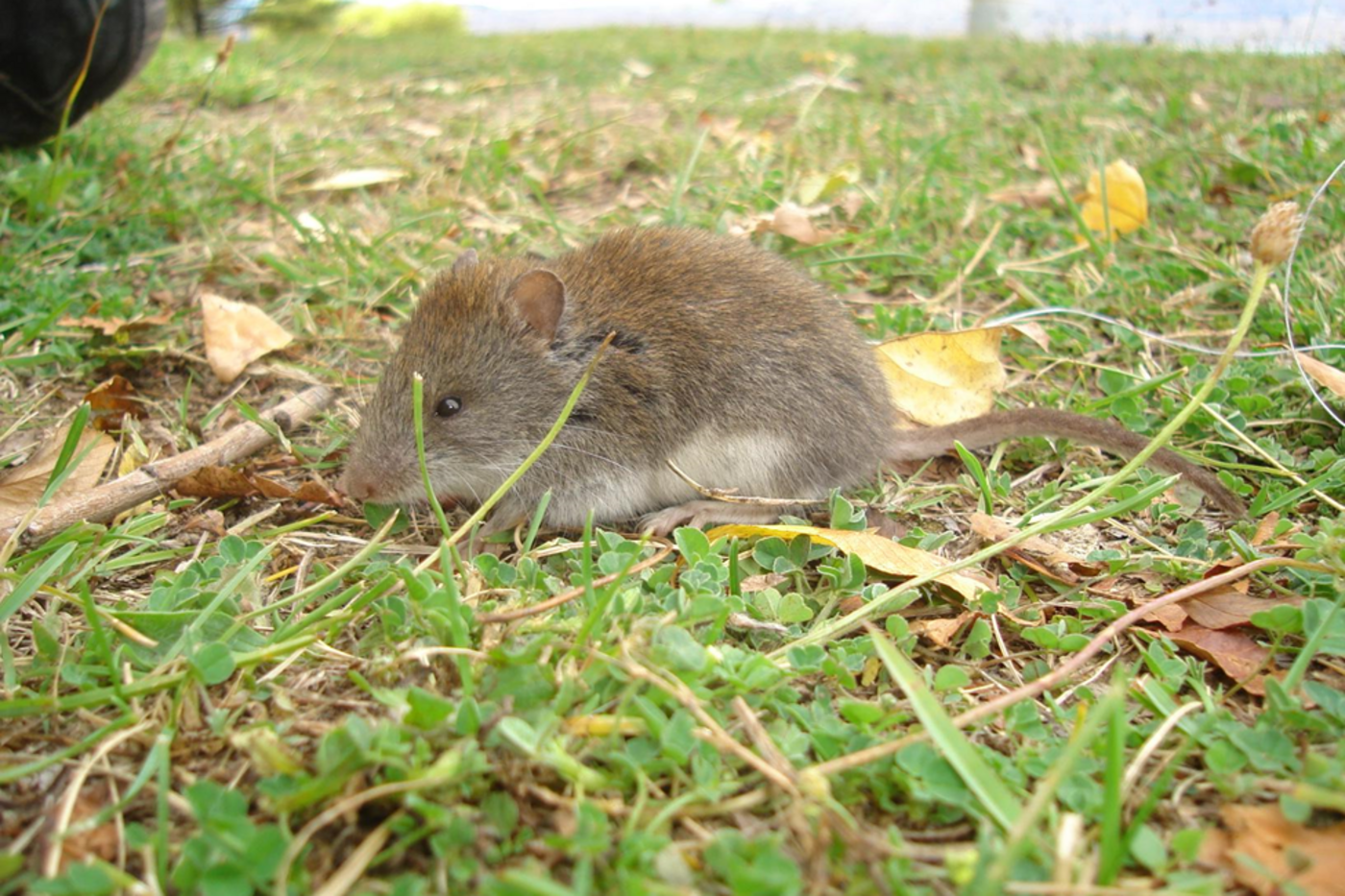 New research from wildlife biologist Noé de la Sancha found shaggy, soft-haired mice on the rainier side of the Andes Mountains were larger, which may point to a new rule of nature. (Photo by Pablo Teta)
New research from wildlife biologist Noé de la Sancha found shaggy, soft-haired mice on the rainier side of the Andes Mountains were larger, which may point to a new rule of nature. (Photo by Pablo Teta)From its habitat in the Andes Mountains, a shaggy soft-haired mouse has more to teach humankind than one might think.
DePaul wildlife biologist Noé de la Sancha studies this mouse and other tiny creatures because he wants to change the perception that human lives are separate from animals. He takes a global view on how small mammals, such as rodents and bats, can deepen our understanding of climate change, deforestation and even human health.
“For most rodent species on our planet, we still don’t know basics: where they live, what they eat, where they primarily hang out. This is what makes them such a good topic of research,” he says.
Small mammals account for an estimated 70% of all mammal species. With an ongoing research post at Chicago’s Field Museum, he also joined DePaul’s College of Science and Health this summer as an assistant professor of environmental science and studies.
 With an ongoing research post at Chicago’s Field Museum, Noé de la Sancha joined DePaul’s College of Science and Health this summer as an assistant professor of environmental science and studies. (Image courtesy of Noé de la Sancha)
With an ongoing research post at Chicago’s Field Museum, Noé de la Sancha joined DePaul’s College of Science and Health this summer as an assistant professor of environmental science and studies. (Image courtesy of Noé de la Sancha)Recently, de la Sancha’s work
made headlines for discovering what may be a new law of nature. After examining the skulls of 450 mice from the southern tip of South America, de la Sancha and other coauthors found mice on the rainier side of the Andes Mountains tended to be larger. Their results were published in the “
Journal of Biogeography.”
“There are a bunch of ecogeographic rules that scientists use to explain trends that we see again and again in nature,” de la Sancha
told the Field Museum. “With this paper, I think we might have found a new one: the rain shadow effect can cause changes of size and shape in mammals.”
The phenomenon of the rain shadow occurs as cool, wet air approaches a mountain, making one side more lush. Some 22% of land mass on Earth is covered in mountains. As the climate warms, animals in these mountainous ecosystems will be pushed to different elevations and may eventually die out.
“Climate change is going to affect not only the distribution of species, but also many other aspects of their physiology and their ecology, and maybe even their morphology down the road,” de la Sancha says.
With more than 40 million artifacts and specimens, the Field Museum’s extensive collection fueled this research and has been a resource for de la Sancha since working on his PhD dissertation. The Field Museum is the third-largest natural history museum in the U.S. and the fifth largest in the world. As more and more species become extinct, de la Sancha says the Field’s collection is more vital than ever.
“We’re currently in the middle of Earth’s sixth mass extinction. The primary driver, equivalent to the meteorite that killed the dinosaurs, is humans,” he says.
For his next project, de la Sancha will research how habitat loss can create stress and disease in wildlife. In support of this work, he won a
Biota Award, which funds early-career researchers in Chicago who seek to restore, protect and conserve biodiversity. He will examine deforestation of the tropical Atlantic Forest of eastern Paraguay.
“People are living closer to deforested areas, which creates a perfect storm for animals that are more stressed out and potentially have more disease and viruses,” he says.
He points to the ongoing mystery about the exact origins of COVID-19 as a vital reason for researching animals like these in vulnerable areas. While some research suggested bats were the origin of the coronavirus that causes COVID-19, de la Sancha asserts scientists hit a blockade because they had discarded the original “voucher” specimens of bats. He plans to bring DePaul students to the museum to show the importance of the collection to ecological research.
Looking forward to bringing this experience and knowledge into DePaul classrooms, de la Sancha will also engage students in fieldwork to study rats and squirrels in the city. He will teach them how to conduct population and statistical modeling. On another urban ecology project with the museum and the Lincoln Park Zoo, he is exploring the morphological and genetic variation of rats — and will be expanding the research to squirrels.
“The big picture is that biodiversity is changing everywhere,” he says. “And humans are driving that change.”